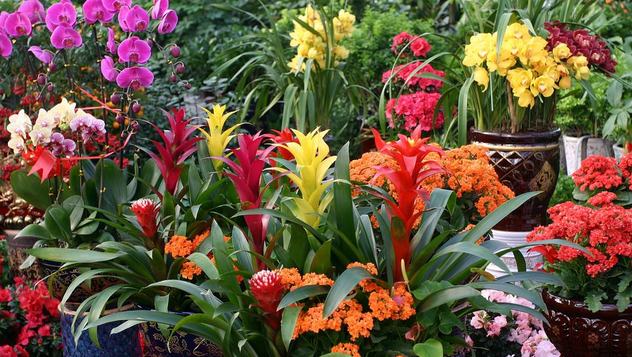In the winter and spring seasons, the temperature is low, the ventilation of the greenhouse is poor, and the air is not released in time. The gas inside and outside cannot be exchanged in time, so that the flowers in the greenhouse will be harmed by harmful gases. The leaves of the lighter are yellow, dry, poorly grown, and the ornamental value is reduced. The heavy plant died. The types of common gas hazards and control methods of greenhouse flowers are briefly described as follows: (1) Ammonia gas and nitrogen oxide gas hazards. These two substances are often caused by improper fertilization. For example, when applying ammonium bicarbonate or applying a large amount of urea, ammonium sulfate and a large amount of undecomposed organic fertilizer during topdressing, in addition to high temperature, drought and poor ventilation, the shed is often produced in a short time. A large amount of ammonia gas causes plant poisoning. The performance is that water-stained spots appear from the edge of the leaf, which seems to be boiled, and then gradually brown, dry, and shedding. For example, the cut flowers often show the above symptoms. Most of the nitrogen oxide gas damage is manifested after 10 days of fertilization, and the affected leaves have irregular green and white spots, such as gerbera and gypsophila. Control method: The greenhouse should avoid the use of ammonium bicarbonate. When urea or ammonium sulfate is used as top dressing, it should be applied less. It is best to dilute it with water to 500 times and then apply it. The organic fertilizer must be fully decomposed before application. (2) Carbon monoxide and sulfur dioxide gas. When coal fire or sawdust is used for heating in plastic greenhouses, a large amount of carbon monoxide and sulfur dioxide are generated due to insufficient combustion or poor flue and high sulfur content in the fuel. The affected leaves showed obvious punctate, blocky or flaky white spots, and the tip and leaf margin were yellow. Such as the stars, carnations and so on. (3) The hazards of membrane toxic gases. Some plastic films are added with plasticizers and stabilizers (such as 2-isobutyl phthalate) during the production process. During use, they can emit toxic gases such as ethylene and chlorine and phthalic acid-2- Harmful substances such as isobutyl ester. The data show that when the content of harmful substances such as 2-isobutyl phthalate in water droplets reaches 10 to 20 g/l, the water droplets are atomized and absorbed through the roots or leaves, which will cause serious Toxic effect. When the concentration of chlorine in the air reaches 0.1 mg/L, the leaves will appear colored or light brown irregular spots, and in severe cases, the leaves will turn white or even fall off. When the ethylene in the protected area reaches 1 mg/L, it will cause yellowing and even whitening of the leaves and leaves between the leaves. Control method: timely ventilation and ventilation, use the sunny day at noon to open the vents, so that the air is unblocked, even in the rainy and snowy weather, should also be short-term ventilation, to minimize harmful gases in the shed. (4) Excessive use of drugs. Excessive use of aerosols (such as chlorothalonil, scopolamine) or fumigants (dichlorvos) and the use of fumigants are unreasonable (eg formalin, methyl bromide can only be used in empty sheds, easy to use during plant growing season) The phytotoxicity) will also cause the leaves of the flower plants to appear yellow and dry. Control method: use the above agents correctly and reasonably. Inflated Flood Tube,Water Active Flood Bag,Tube Flood Barrier,Water Filled Tubes For Flood Control Denilco Environmental technology(Suzhou)Co., Ltd. , https://www.wflood.com